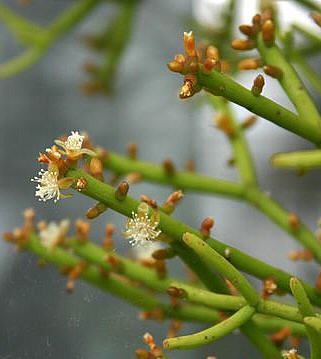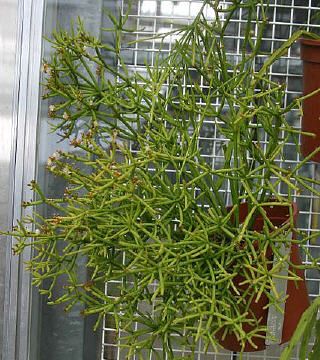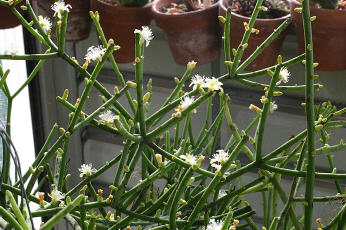


|
R. teres forma heteroclada
(copyright KAF, Kew 2006)
- Plant - stems stiff, dark green, but purple about areoles and tips
of branches, often erect in cultivation, much branched toward top of plant
- Branches - often in verticillate clusters, much more slender than the
main stem,1 to 2 mm. in diameter
- Areoles - small, often bearing
a single bristle;
- Flowers - small, white or greenish;
- Petals - 5, obtuse, spreading or recurved;
- Filaments - about 20, white, erect;
- Style - white, sunken at base into a little cup;
- Stigma - lobes 3, white;
- Ovary - green, about 2 mm.
long;
- Fruit - globose, 5 to 6 mm. in diameter, white.
This
form has stout, cylindrical stem-segments and yellowish flowers.
It is often found as a lithophyte enduring high light intensity. The name R. conferta Salm-Dyck (1850:
229) is probably the earliest published for this taxon.
Previous Page |


